
By Nicola Perera & Sivamohan Sumathy | Himal South Asian
.............................................................................................................................................................................................
The eviction of the residents of Mews Street is part of a larger campaign to ‘clean up’ the area for development and security purposes. A similar campaign took place in July 2008, when the residents of nearby Glennie Street, familiarly known as Kompannya Veediya, were likewise evicted from their homes, on the grounds that their proximity to the nearby Air Force and Army headquarters represented a threat to national security. Kompannya Veediya is what upper- and middle-class Colombo residents would identify as a slum or shanty. Yet apart from the presence of military establishments, it is also falling prey to other forms of gentrification – for instance, a former warehouse turned into an exclusive restaurant and art gallery.
The people of Kompannya Veediya claim longstanding tenure in the neighbourhood. But on 11 July 2008, the Ministry of Defence served eviction notices on the inhabitants of the 359 houses, asserting that they were on the ministry’s land. The Urban Development Authority (UDA) planned to relocate the community to temporary accommodation, on the promise that they could take up residence within a year in a new housing complex being constructed in Dematogoda, a lower-middle-class locality in central Colombo.
The destruction of the Kompannya Veediya houses was also part of the municipal authorities’ campaign to spruce up the city in preparation for the SAARC Summit, which Colombo would host in July-August 2008. The eviction was surrounded by political controversy, fuelled in part by the human dimension of working-class citizens attempting to preserve their homes against the Colombo Municipal Council’s (CMC) bulldozers. A petition was filed with the Supreme Court on the residents’ behalf by some members of the Parliamentary opposition, and the standoff was covered extensively by the media. However, the spectacle of outraged homeowners, visiting politicians, teargas and bulldozers was only the most recent and public chapter in a longstanding negotiation process between the Kompannya Veediya community and urban/national governance structures.
Although the potential resettlement of the Kompannya Veediya residents had been on the cards since the 1980s, it was the imminent SAARC Summit that finally triggered the move. (Likewise, a popular perception of the recent evictions from Mews Street points to the International Indian Film Academy awards ceremony, held in June in Colombo). The location of the neighbourhood – literally in the environs of high-security installations, and figuratively in the discourse of national security – was precipitated by the timing of the Summit, shortly after the Sri Lankan government resumed fighting the LTTE in earnest. The community of squatters had grown steadily in the area during the previous half-century, but in the pre-Summit climate of heightened security, the state suddenly woke up to a threat on its very doorstep – in the Kompannya Veediya residents. The Summit demonstrated the state’s continuing policy of conflating the ethnic conflict with the war against the LTTE, and dismissing both to the margins of the nation. However, the heavy security arrangements and the eviction issue immediately exposed the fissures in the embattled state’s representation of an uncontested national identity.
Loyal opposition
The 2008 eviction was similar to the authorities’ controversial round-up of individuals from the north of Sri Lanka in June 2007, while they were staying in lodges in the capital. As was then the official explanation, the Kompannya Veediya neighbourhood was identified as a potential host for LTTE members. Apart from the shock of sudden homelessness, the people perceived the eviction order as an insult to their self-identification as patriotic citizens. One man, ‘Mohammed’ (all names have been changed), spoke about how they would often show their solidarity with the soldiers manning the nearby checkpoint by sharing a late-night cup of tea with them. As ‘S E Susith’ said, ‘We have never acted in any way where we deserved to be shot, because this is our country. We have reported suspicious individuals hanging around the neighbourhood at once to the police.’
Such assertions of loyalty came from individuals whose ethnic-religious-linguistic identities were not always in sync with the Sinhalese-Buddhist ideal. The majority of the Kompannya Veediya community is of Malay origin and mostly Muslim, while the rest are a mix of Sinhalese Buddhist and Tamil Hindu or Christian. (With one of these writers who did not speak Tamil, the Tamil and Malay interviewees spoke in Sinhala.) Susith stated that, like himself, the other members of his family and virtually all of his Sinhalese neighbours and friends in the Kompannya Veediya settlement converse fluently in Tamil. It is not uncommon for non-Sinhalese people living in the south to possess some functional Sinhala. Conversely, it is common for Sinhala-speakers in the south to live their entire lives without ever feeling the need for Tamil-language competence. Sinhala-English or Tamil-English bilingualism is more frequent, as a result of middle- and upper-class socioeconomic privilege. Nevertheless, the state’s rationale that the predominantly non-Sinhalese Kompannya Veediya residents endangered national security was based on a fundamentally undemocratic concept of the nation that excluded Mohammed and others like him. However, the blurring of linguistic and ethnic lines in the community also destabilises the strict binaries of ‘self’ and ‘other’ that support the dominant paradigm of ‘Sri Lankan-ness’.
The SAARC Summit became an occasion for the marginalisation of the Kompannya Veediya group in another sense too. According to residents, their ramshackle, haphazard constructions presented a jarring note for VIPs travelling from sophisticated downtown Colombo to the conference venue. However, sweeping a group of low-income citizens out of view gave the lie to the state’s pledge of human-centred development embracing the entire nation, particularly for the country’s underprivileged classes.
In fact, Kompannya Veediya was a space marked by heavy political engagement. With weary cynicism, the people recall archetypal stories of election campaigning involving hopeful people’s representatives distributing bottles of liquor and rice packets. The community had also relied heavily on political patronage to obtain utilities and other services. They answered the Urban Development Authority’s claim that their houses were illegal structures by pointing to a stone plaque at the entrance to the neighbourhood, proclaiming the inauguration of an electricity-supply scheme by M H Mohammed, then Minister of Western Region Development, in 2004. ‘Nafeek’ stated, ‘These were once wooden structures, but the authorities told us that if we build with cement then we will be provided with electricity.’ Nevertheless, the work to provide electricity to the settlement proceeded only in fits and starts, leaving many of the houses without power. Consequently, when a death occurred in the neighbourhood, the people would speak to a local politician, who would obligingly assist in tapping into a nearby power line for the funeral ceremonies.
The Kompannya Veediya community’s history of interaction with state functionaries also served to constitute their identities as citizens. The people show meticulously maintained bills from the Ceylon Electricity Board, as well as tax receipts. A Household Enumeration Card issued by the Colombo Municipal Council tagged each house with a number, and recorded the electorate, ward, street name, the principal occupant’s National Identity Card number and ethnicity. ‘Do cooperate to make your place a safer place to live,’ the Household Enumeration Card exhorted the people of Kompannya Veediya, perhaps foreshadowing the community’s eventual marginalisation for the sake of national security. Similarly, each household was issued a separate card by the Air Force headquarters, instructing residents to provide details of additional temporary or permanent residents to the nearest police station.
Today, the residents are clear about the government’s actions, as well as its agenda for cleaning up the city. One of the residents recalled, ‘When we saw the street people and beggars being chased off the road, we didn’t think we would be chased off as well!’ A throwaway line in a weekend newspaper in July 2008 offered a counterpoint to this sentiment: ‘There is fear and fire in the hearts of over 700 underprivileged families … This is a place where very few of us have been.’
Little Kilinochchi
Such underlying themes of class identity are marked in the act of eviction, and in the way those evicted perceived it. The houses were houses in the way middle-class houses are supposed to be: Mohammed told us about how some of the residents had built ‘up-stair’ houses with attached bathrooms, well-constructed roofs and marble. In the same vein, the people highlighted the success stories of those who had made good for themselves, leaving the slum for the ‘good life’: among the fisherfolk, day labourers and those who sold homemade snacks for a living, there was the occasional athlete who had competed abroad. Several stories were related to us of mothers, wives and daughters who had fuelled this pursuit of gentrification by joining the migrant workforce going to West Asia. They were, in other words, good, law-abiding citizens. And yet…
The members of the Kompannya Veediya community who had taken up the UDA’s offer of makeshift accommodation were eventually relocated to a site on the banks of the Kelaniya River in Thotalanga. The rows of single-room wooden shelters reminded us of Zone 1 in Menik Farm, where people rendered homeless by the final battles of the war were housed by the state. The association was brought home by a parting comment by Susith, in reference to their eviction. ‘This is little Kilinochchi,’ he said, referring to the centre of the last phase of the battle – and underlining, in no uncertain terms, the marginalisation of a group of underprivileged subjects of the state.
Two years later, in 2010, the questions raised by the evicted residents of Mews Street are sharply political. One woman narrates her story, subverting conventional notions about belonging and citizenship:
The place has been taken over to build a school for soldiers’ children. And our children are destitute. How can we send them to school? Their shoes are somewhere, schoolbooks are somewhere else. We are living here. At night we go and sleep somewhere. But this is nothing new to us. This is how Ananda and Nalanda [two prominent Sinhala-Buddhist schools in Colombo] were built too. Look at those schools. There are no Colombo children in those schools. They put their own children, and most of them are kudukarayas [drug addicts] and thugs. Only a few are good people.
Only days later, the former Mews Street residents were relocated to the Thotalanga settlement, inexorably swept away by the government’s current campaign to reclaim the city.
The processes of eviction and dislocation, and the status of displacement, raise questions about the nature of citizenship and its investment in securing the city in ways that marginalise people in multiple ways. The restated question of belonging is not just about who belongs, but also: Where do they belong?
.............................................................................................................................................................................................
Nicola Perera is a writer based in Colombo.
Sivamohan Sumathy teaches literature, critical theory, theatre and film theory at the University of Peradeniya, Sri Lanka. Her works include Thin veils, Like myth and mother, Piralayam and Oranges.
© Himal South Asian

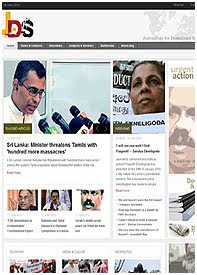

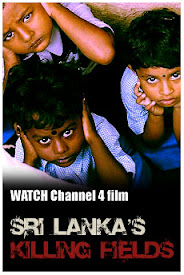

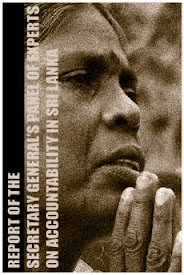



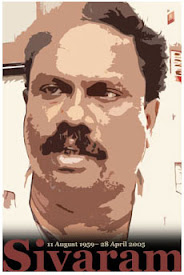

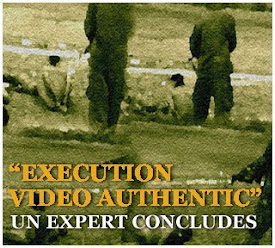

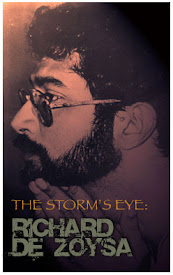

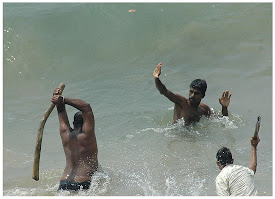
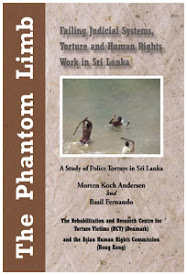
No comments:
Post a Comment